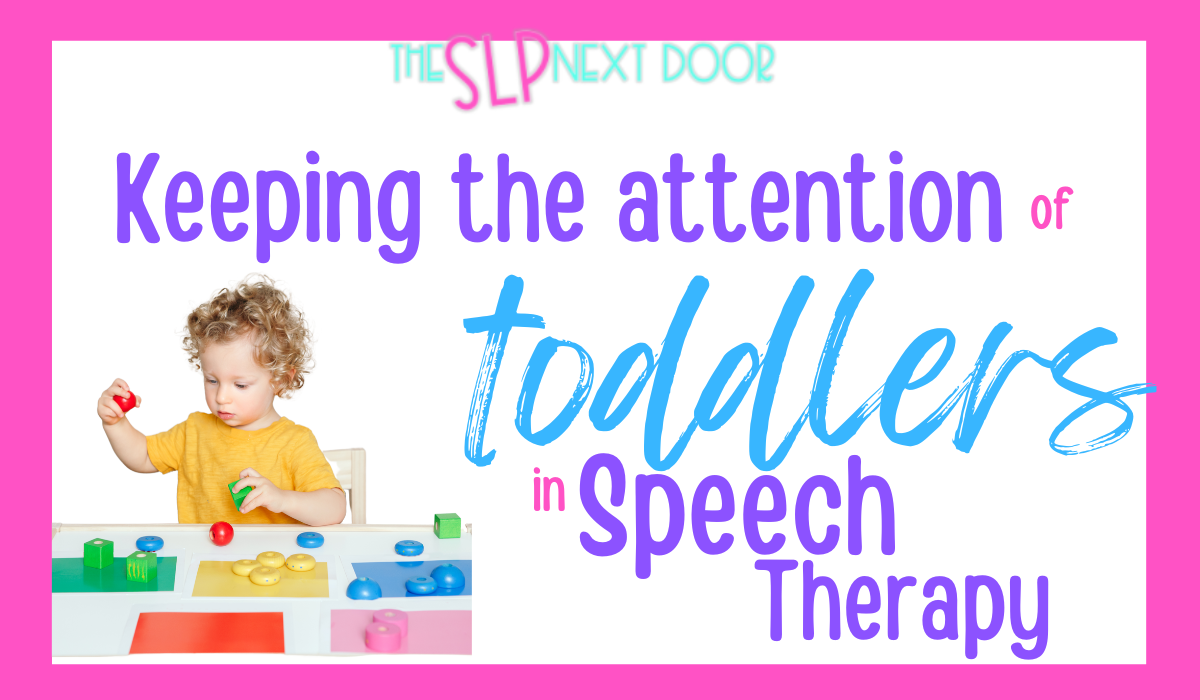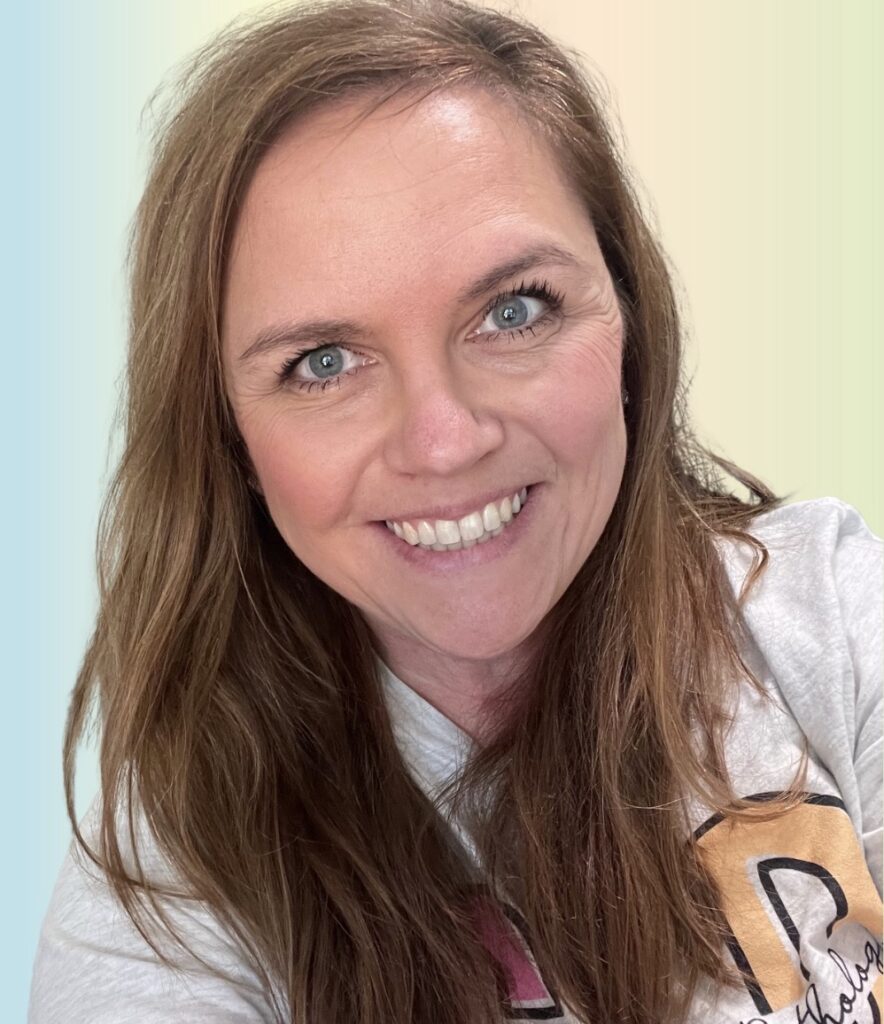The number one question I get asked when it comes to toddler speech therapy activities? How do I keep toddler’s attention?
The short answer is….. You can’t.
Wait. What?!
Hold up! Before you find yourself discouraged- take a breath. Here’s a few things this actually means
- You’re not a bad therapist – EVER
- You’re not doing it wrong – might just need a few tweaks here and there. YOU GOT THIS!
- You can still take data and see progress – and generalization 🎉
Toddler Favorites
Let’s face it. You are not going to be able to keep the attention of babies and toddlers for very long- it’s not developmentally appropriate. (feel the relief? it’s means you’re not doing this wrong!) Because their attention span is short, child led therapy and play-based therapy along with finding out the toddler’s interests are very important.
Find out: What are the toddler’s favorite songs, favorite t.v. shows, toddler books, toddler toys… what do they enjoy? If you can learn this information from the get-go, you’ll save yourself a lot of time and frustration.
It’s also another huge reason you’re going to meet them where they are.
Meet them Where They are
What does this mean? Essentially, you’re going start encouraging their current communication and developmental skills and build from those current skills. This makes managing expectations less stressful and will allow you to see progress quicker in a variety of areas.
Another thing to keep in mind….a toddler’s attention to task is going to depend on a few things: their developmental level, their age, and their current skills and abilities. As with everything else in toddler world, attention (and even play) require time for development.
Speaking of play….
6 Stages of Play
I talked about the 6 stages of play when it comes to phonemic awareness. However; it’s also important to keep these 6 stages of play in mind when it comes to toddler’s attention span and choosing activities for toddler speech therapy. (and many many other areas for this populati
1.Unoccupied Play (Birth-3 months) babies make a lot of movements with their arms legs, hands, and feet. Basically, they are discovering how their body moves.
2. Solitary Play (Birth – 2 years) a little one plays alone and isn’t necessarily interested in playing with others. (baby flips through books, manipulates puzzle pieces, stacks blocks, etc.) This is what’s occurring when you see therapists stacking blocks up and saying exclamatory words like “uh-oh!” when knocking them down.
3. Spectator Play (2 years) toddlers watch others playing but they do not play with them. They might be playing with their own toy, but notice others in the room have toys as well…. or in terms of toddler speech therapy, they might be in their own world playing with a toy but have an idea that you’re there too, they just don’t play with you.
4. Parallel Play (2 years and up) Parallel Play occurs when your little plays along side or near another person or child but does not play with them. When you bring out the blocks, they will play with the same set of blocks, but aren’t stacking blocks with you to make one tall tower. Instead, they are making their own tower.
5. Associate Play (3-4 years) Toddlers start to interact with others during play but there’s not a lot of interaction actually taking place. They might be engaging in an activity related to the one you have around them, but they aren’t actually interacting with you. Playing with the same group of toys you have, but doing something different.
6. Cooperative Play (4 years & up) This is the typical engagements and interactions we think of when hearing the term ‘play’. Toddlers engage and interact with others during the same activity.
Understanding that toddlers are going to developmentally progress through these stages is another way to help you manage expectations and encourage communication based on a toddler’s developmental skills.
Toddler Communication
What are their current methods for communication? Vocalizations, verbalizations, gestures, behaviors, sign language, picture communication… a variety?
Always build from their current communication skills (yep, even the behaviors!). Starting with what they are using as methods of communication. This is going to be your biggest pathway to success because you enter into their world on their level- which is the goal when starting to build relationships. Entering their world on their terms builds trust and begins the foundation for their later communication skills. Consider this: when you meet new people (at home or work) if they show up and have reasonable expectations from you, enter your world respectfully; it’s not nearly as stressful as when someone comes in and just creates chaos.
Same goes for toddlers!
Toddler’s Attention Development
Keeping your expectations within reason, understanding that attention and play will develop as the toddler grows, and meeting them where they are in terms of their current communication skills will help you begin to see more success in your toddler speech therapy sessions!
Catch the videos about this series on my instagram and Tiktok!
If you’re looking for more information about increasing communication in toddlers, be sure to grab my FREE Toddler Toolbox! The ultimate guide to jumpstarting communication in toddlers!


